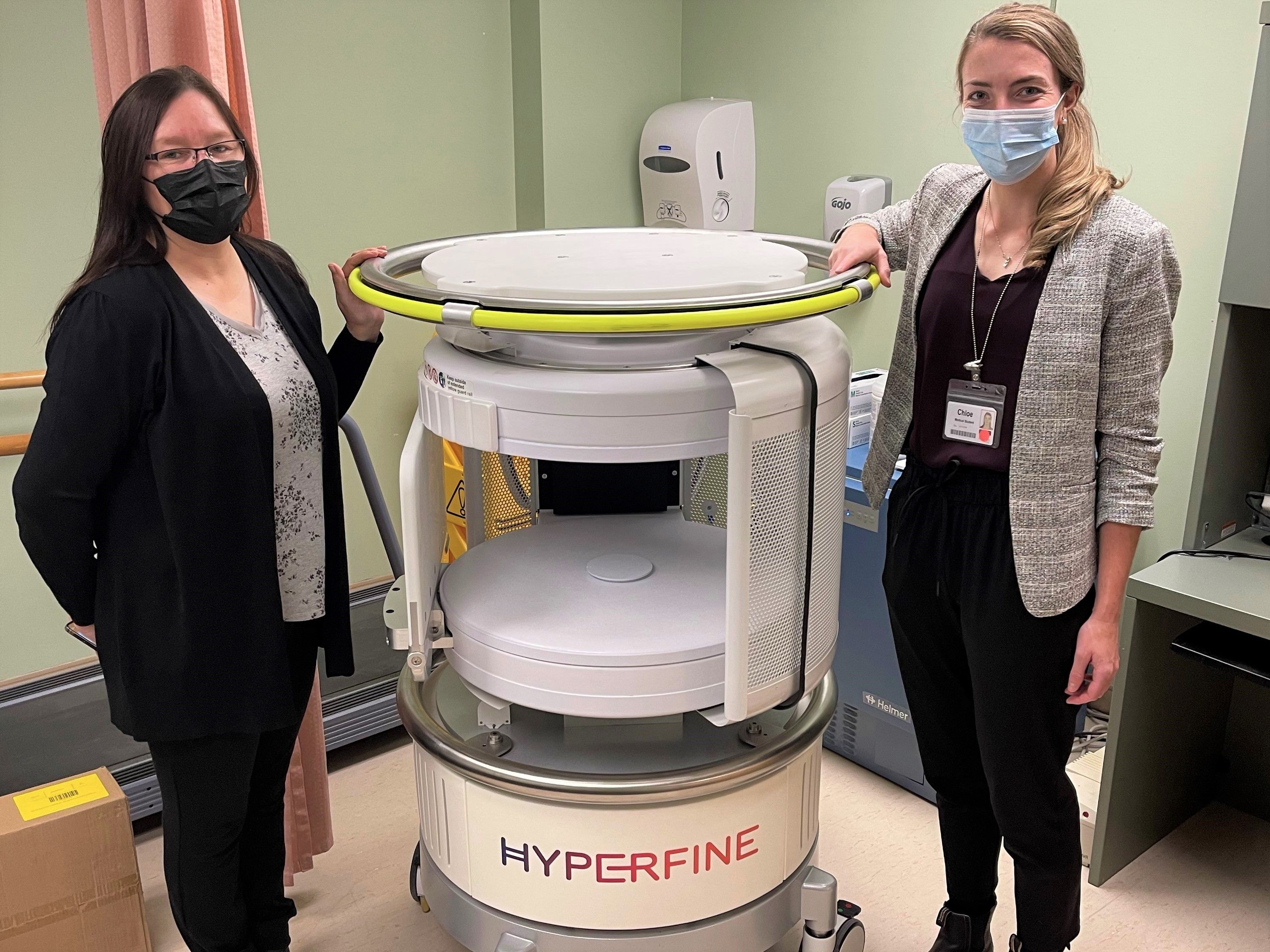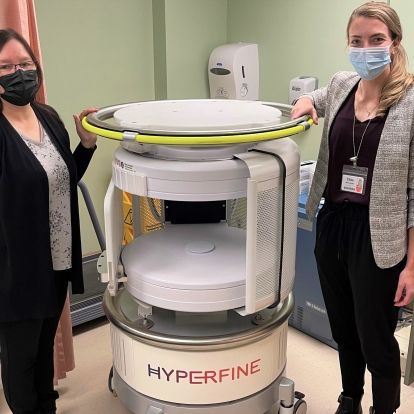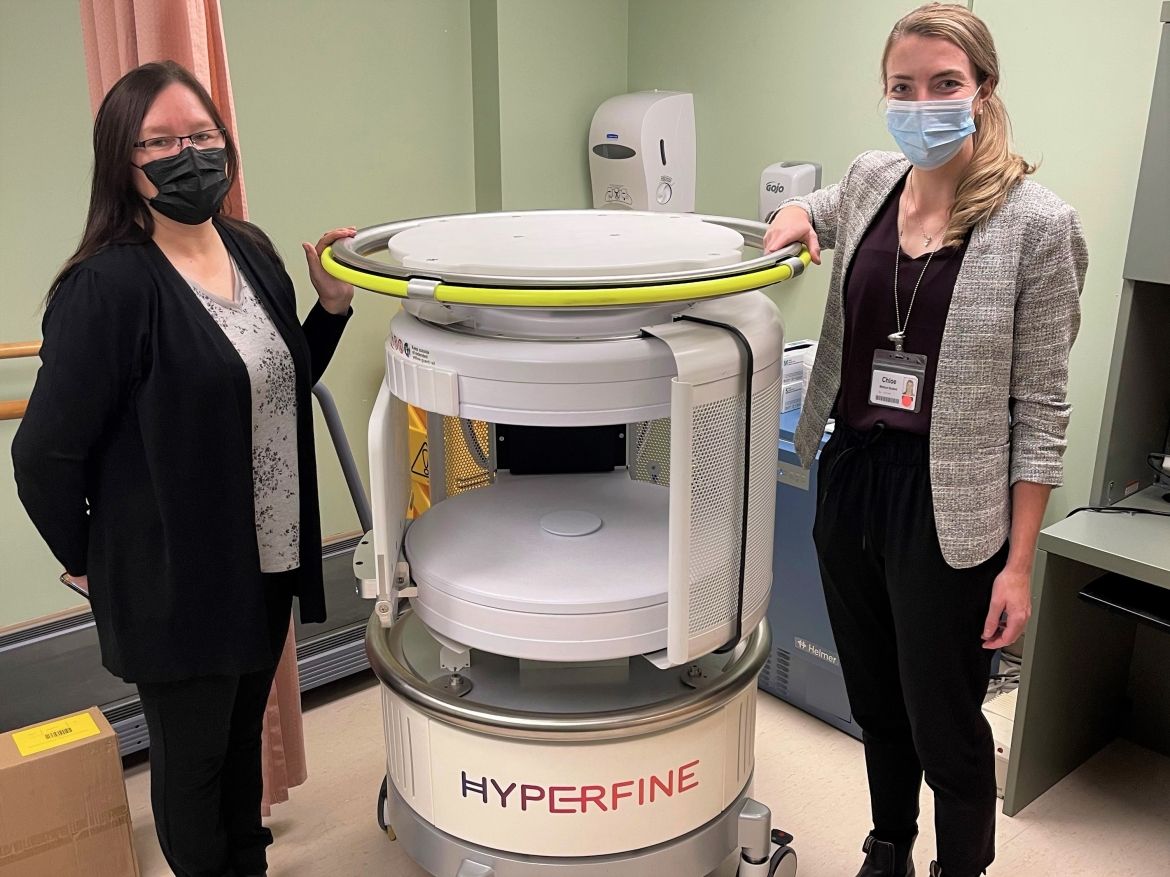Effective immediately masking is required for everyone when present on all inpatient units, in the Emergency Department (ED), the Urgent Care Centre (UCC), and the Children’s Outpatient Centre (COPC).

Life in Ontario’s far north brings with it unique challenges. Depending on which community you call home, something as simple as running to the grocery store to pick up an ingredient when you’ve run out may not be easy. So, what happens then when you have a more urgent need; for example, if you’ve suffered a stroke and are hours away by plane from the nearest hospital with a Magnetic Resonance Imaging (MRI) machine?
A new study, being led by Kingston Health Sciences Centre (KHSC) and Queen’s University is looking to find answers to that question through the use of a portable MRI, a brand new technology now available in Canada. Developed by Hyperfine, the unit was recently delivered to Weeneebayko General Hospital in Moose Factory and is the first unit of its kind in Canada to be used for patient care.
“I thought a portable MRI would be a game-changing technology to bring to Canada, especially in remote areas where MRI availability is limited or non-existent,” says radiologist Dr. Omar Islam, who is leading the project. “The analogy would be the introduction of cell phone service to isolated areas where previously even a landline did not exist.”
KHSC and Queen’s Health Sciences, in partnership with the Weeneebayko Area Health Authority (WAHA), have provided specialized health care services to individuals who live in these remote communities along the James Bay coast for decades. This includes the community of Moose Factory, as well as Indigenous communities such as Kashechewan and Attawapiskat. Each week medical teams fly north from Kingston to provide care to these patients. When patients need further specialized care they are then flown south to hospitals in Timmins or Kingston.
“In the case of a stroke for example, every minute is crucial and every moment spent trying to get a patient to a hospital increases the likelihood that the patient could be left with permanent paralysis, loss of speech or brain damage,” says Dr. Islam. “Through this year-long study we hope to learn if making this technology available in the north, by bringing the imaging to the patient, rather than by bringing the patient to the imaging, could improve patient outcomes and quality of life.”
The Hyperfine portable MRI itself is an impressive leap forward in technology and received FDA approval in 2020 and Health Canada Investigational Device Use for this specific project in 2021. Designed to scan a patient’s head, it can be wheeled into the patient’s room and plugged into a traditional wall outlet since it draws as much electricity as a household coffee machine. Using a tablet to control the MRI, scans take about 45 minutes to complete and images are instantly sent via a secure network, built by KHSC’s Information and Technology team, to neuroradiologists in Kingston to review.
“The mission and vision of the WAHA is to provide care as close to home as possible and the Hyperfine MRI project is another big step in that direction as this eliminates the need for travel and time away from home. We are very excited here at WAHA to have one of only two machines in Canada and are very happy to collaborate with Queens University, KHSC and Hyperfine on this very innovative project,” says WAHA Chief of Staff Dr. Elaine Innes.
“This portable MRI study demonstrates a key priority for Queen’s Health Sciences: to develop clinical, research, and education projects that respond to community needs,” says Queen’s Health Sciences Dean, Dr. Jane Philpott. “Collaboration is an essential part of this vision and I am thankful for our longtime partners – the Kingston Health Sciences Centre and the Weeneebayko Area Health Authority – for their ongoing support of research that makes such a difference in people’s lives.”
Over the course of the year-long study, the team expects to scan over 200 patients.
“We hope to democratize care by showing that there will be improved access to advanced health care, decreased health care costs, and improvement in the lives of patients and their families living in small remote communities throughout Canada,” says Dr. Islam. “We also expect to learn more about its ability to be potentially used in larger academic hospitals such as KHSC; to determine if it would be beneficial for use in the Emergency Department, Intensive Care Unit and Neonatal Intensive Care Unit, saving medical teams from transporting patients to the traditional MRI suite.”
Gallery


Weeneebayko Area Health Authority Chief of Staff Dr. Elaine Innes and Queen's University medical student Chloe Des Roche with the portable MRI at Weeneebayko General Hospital in Moose Factory.



